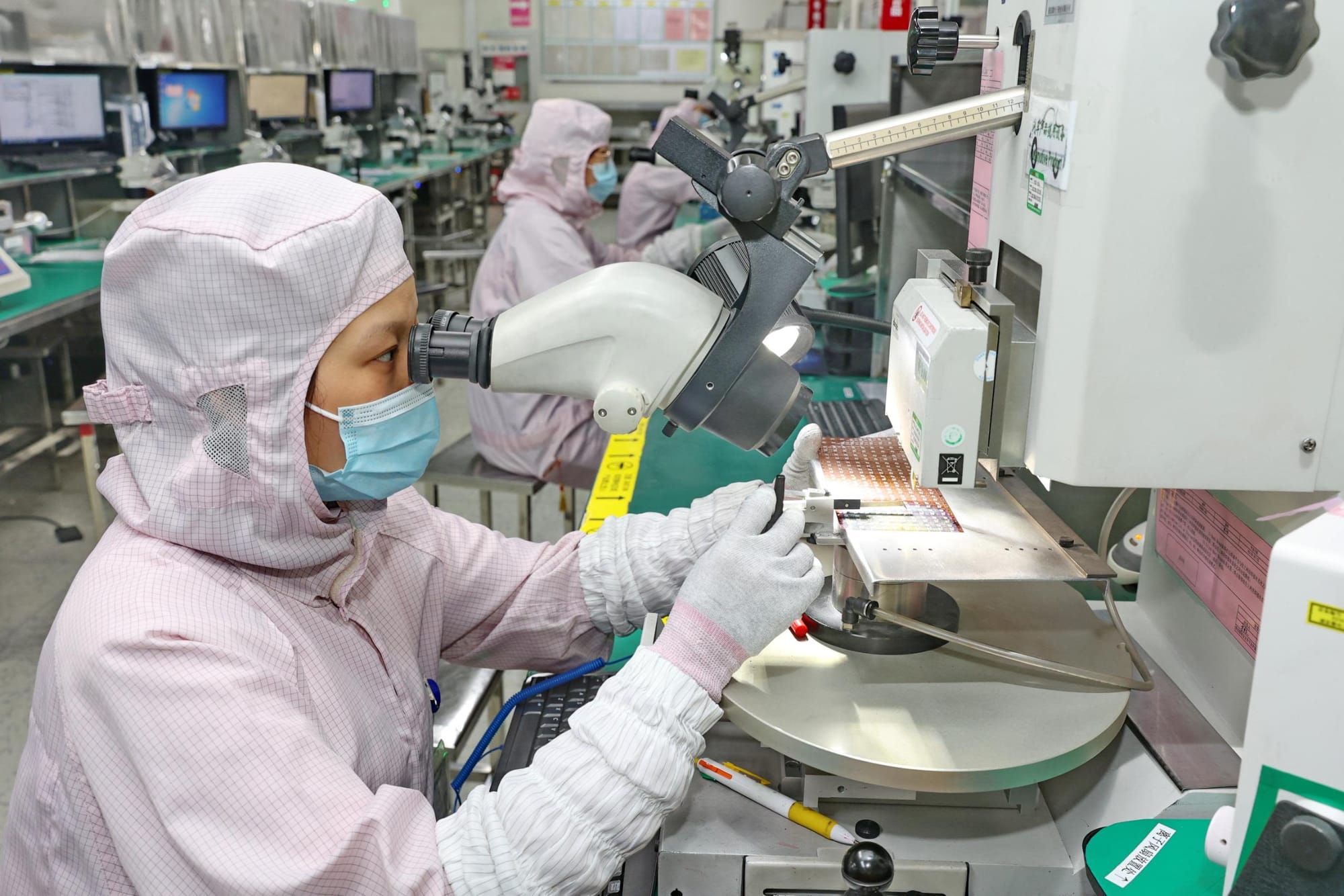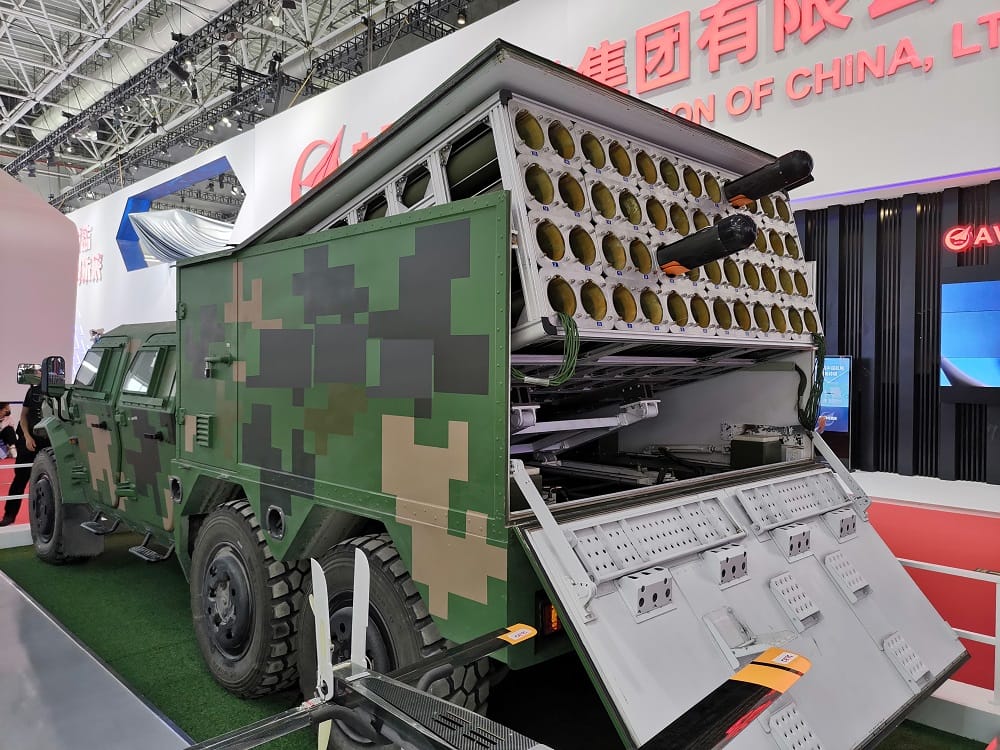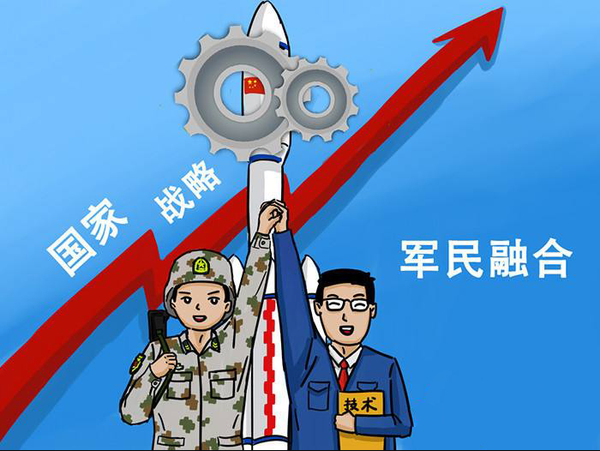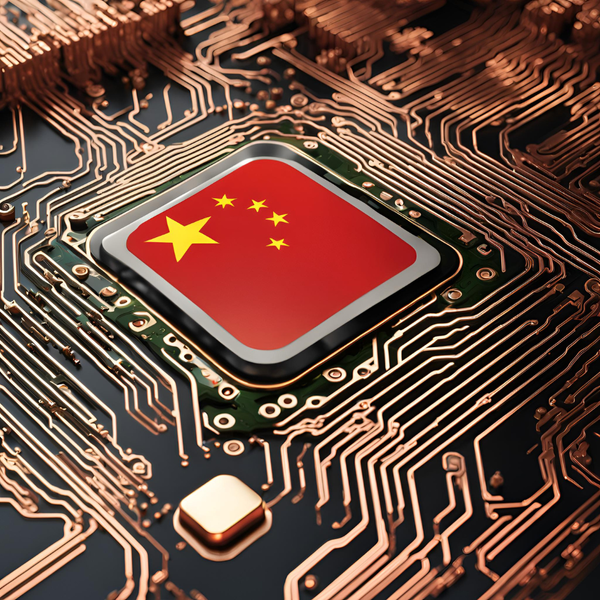The PLA’s Strategic Integration of AI: Navigating the Complex Terrain of Military Operations and Future Warfare
What impact is AI having on the PLA? We take a look at what the effective implementation of AI could look like when used in the Chinese Military.

We try to keep up with developments in the People’s Liberation Army (PLA), and regularly examine the China Military website. Just one example we found was about using Artificial Intelligence (AI) technology in drones. The post we’ve linked above (we’ve popped it into the Wayback Machine for you!) is a Global Times article from 2019, containing an interview with the chief designer of China’s Wing Loong drones. It’s interesting to see their predictions of how AI would help in the use of drones, but that is just a subset of potential applications of AI in the military sphere.
In this article, we delve into the PLA’s strategic endeavors, shedding light on how AI is becoming an integral force multiplier in shaping the trajectory of military operations and future warfare scenarios. Beyond the challenges, we unravel the multifaceted approaches and unique perspectives driving the PLA’s forward-looking strategy, offering a glimpse into the evolution of armed forces in the era of intelligentized warfare, and provide some interesting pointers to further reading on the topic!
PLA Applications of Generative AI
For the PLA, looking at creating their own “ChatGPT” system would be the next step in integrating AI into everyday operations. AI algorithms can process and analyze vast amounts of data at a much faster pace compared to a human analyst. For this to be effective, it would need to be integrated into unmanned combat platforms and joint combat systems that can plan combat tasks, assign objectives and strike a target.

In his well-sourced paper in CASI, Baughman argues that “overall, China understands the need to be a first mover (or close follower) in Generative AI on the battlefield to “firmly grasp the strategic initiative of
intelligent warfare and seize the commanding heights of future military competition” but much
like the US military is also cautious about the dangers of integrating the technology too quickly
without careful regulation and testing“. Baughmann goes on to enumerate some of the potential applications of ChatGPT in domains such as decision-making, network offensive and defensive warfare, and training. Baughman concludes by pointing to PLA concerns around building datasets for the AI to work with, optimizing these, and the fact that as a ‘black box’ model, there is limited trust on the part of the CCP towards the datasources used by Generative AI like ChatGPT.
Baughman refers heavily to PLA sources and we examined one of these as well. The PLA themselves in PLA Daily Online (解放军报) on 13 April 2023, note that “Although AI has natural flaws, this does not prevent it from becoming an excellent “consultant/staff officer” (参谋) and assistant. Up to now, the range of applications in the military sphere is constantly expanding… for example, in the field of reconnaissance and perception.” The article notes, however, that “Breaking the rules (打破常规) is the key to fighting AI….ChatGPT reorganizes the known” through content integration, instead of “discovering the unknown” at the viewpoint and cognition level.”
For more information, we’d recommend reading:
How China’s PLA could use tech like CHATGPT, and what could hold it back for a good summary of Baughman’s points.
Changing Role of the Human

China’s PLA is steering its military strategy into uncharted territories with the concept of “Intelligentization” (智能化). This forward-looking approach emphasizes the creation of an expansive “cognitive space” (认知空间), where AI takes center stage in refining decision-making processes and cultivating intricate thinking. The concept of “Intelligentization” represents a significant departure from conventional military approaches; here, AI not only acts as an aid to human decision-makers in tactical warfare, but is also a key component of frontline warfare which we talk about a little bit more below.
The PLA has long looked for ways to improve and enhance the capabilities of its commanders in decision making. In particular, Chinese military leaders are looking to overcome the “five incapables” (五个不会), which represent short-comings in cadres’ abilities to:
- Judge the situation
- Understand superior intentions
- Make decisive combat decisions
- Deploy troops effectively
- Handle unexpected situations
Intelligentization aims to reduce the reliance on traditional decision-making methods and mitigate the identified shortcomings by providing commanders with advanced tools and capabilities to facilitate quicker and more informed decision-making in combat scenarios, and optimize troop deployment through data-driven insights and predictive analytics. Yet, in the midst of this paradigm shift, the PLA maintains a pragmatic perspective on human-machine collaboration. Despite the gradual transition from humans being “in the loop” (在循环中) to potentially “out of the loop” (脱离循环) as the tempo of intelligentized operations accelerates, there is a recognition of the irreplaceable role of human intuition, creativity, and contextual understanding, while AI provides data processing, pattern recognition, and rapid analysis.
For more information, we’d recommend reading:
Artificial Intelligence in Future Chinese Command Decision Making
China’s Ambitions for AI-Driven Future Warfare
Unique Aspects for the PLA: Challenges and Opportunities
The PLA grapples with a myriad of challenges rooted in its deeply entrenched centralized decision-making structure. Throughout its history, the concentration of authority within the PLA has posed the risk of hindering effective delegation—a pivotal element in the decentralized decision-making framework crucial for unlocking the full potential of AI. Adding complexity, the PLA’s hierarchical structure and traditional reluctance to delegate decisions downward may clash with the agility necessary for the rapid and dynamic decision-making inherent in AI-driven operations. What’s more, the intricate interplay between political directives and military strategies adds layers of considerations and adaptations needed in the journey toward comprehensive AI integration.
However, this centralized decision-making and hierarchy could potentially offer advantages. It might facilitate a more streamlined adoption process and enable more uniform integration strategies and training that extend across various branches and units. Furthermore, the centralized nature of decision-making within the PLA could be an asset in optimizing resource allocation for AI research, development, and implementation. This ensures that AI projects align effectively with military priorities and advancements. In essence, while the PLA faces challenges due to its entrenched structure, it also possesses inherent strengths that, if carefully navigated, could contribute to a successful integration of AI technologies into its military operations.

The crucial task of attracting and retaining a high-tech workforce stands as a linchpin for the realization of military ambitions in AI. Simultaneously, the PLA and the Strategic Support Force (SSF), operating in pivotal domains like space, cyber, and information operations, grapple with the limitations in engineering advanced logic and memory chips. Overcoming these challenges mandates sustained efforts in talent development and technological innovation, ensuring the PLA remains at the vanguard of AI capabilities. Furthermore, the path to AI supremacy is strewn with collaboration barriers, particularly with research institutions in the U.S. and other Western nations. Geopolitical tensions and restrictions on information-sharing introduce another layer of complexity, hindering the military’s ability to leverage global advancements in AI research. Navigating these barriers demands not only technological prowess but also diplomatic finesse and strategic engagement. The PLA must adeptly foster international cooperation in AI development, transcending geopolitical constraints. In doing so, China aims not just to harness AI capabilities for military dominance but also to play a leading role in the global AI landscape, contributing to the advancement of technology on an international scale.
For more information, we’d recommend reading:
The PLA’s strategic support force and AI Innovation
As Militaries Adopt AI, Hype Becomes a Weapon
AI-equipped weapons and detection systems
In his South China Morning Post series, LAU notes the US Replicator initiative follows China’s development of drone swarms, which have been tested since 2016. A previous paper from SCMP noted testing of ‘suicide drone’ swarms. LAU notes that Chinese development of “versatile weapons and equipment, such as autonomous vehicles and AI-equipped weapons, is in contrast to the attention it had placed on individual assassin’s mace weapons.” Wodecki goes further in AI Business, outlining development of the Caihong and Wing Loong series of drones, Shanyi robots to be used for field reconnaissance, and the amphibious Luwu 8×8 vehicle to provide fire support for beach landings.

Detecting cyber threats is another key military application of AI for the PLA. Machine learning algorithms, can analyze enormous datasets and historical patterns to detect even the most subtle signs of a cyber threat. By learning from past incidents, AI can predict and prevent future attacks. AI could be instrumental in protecting these essential assets by identifying vulnerabilities and implementing security measures making it harder for cyber actors to cause potential disruptions.
Michael Dahm’s article in War on the Rocks notes that the PLA envisions other novel operational concepts, introducing patterns of operations like dormant assault warfare, autonomous cross-domain mobile warfare, and autonomous cognitive control warfare. These concepts capitalize on decentralized operations, surprise attacks, high mobility, and cognitive advantage, showcasing the PLA’s commitment to advancing military capabilities through AI. Additionally, there is an emphasis on precise energy release using AI, allowing for the targeted disruption of an adversary’s system-of-systems, ultimately leading to “highly persistent paralysis.”
For more information, we’d recommend reading:
The PLA’s strategic support force and AI Innovation
Ai weapons’ in China’s military innovation
Flying Dragons and sharp claws: China’s AI-powered military drones
Chinese Debates on the Military Utility of Artificial Intelligence
When China’s military lagged behind US, it pursued an ‘assassin’s mace’ tactic. Smart weaponry and AI are changing that
Conclusion
In conclusion, the PLA is at the forefront of a transformative journey into the realm of military artificial intelligence (AI), marking a paradigm shift in its strategic outlook. With a keen eye on creating their version of a “ChatGPT” system, the PLA envisions integrating AI into everyday operations, capitalizing on the technology’s ability to process vast datasets swiftly. Baughman’s analysis, grounded in PLA sources, underscores China’s strategic imperative to lead in Generative AI. The PLA acknowledges the need for a cautious approach, mindful of the risks associated with rapid integration. Concerns range from dataset reliability to the inherently opaque nature of AI models, emphasizing the importance of establishing trust in the technology within the CCP.
As China embraces the concept of “Intelligentization,” it ventures into uncharted territories, where AI takes center stage in decision-making processes. The PLA aims to address longstanding challenges in human decision-making capabilities, seeking to reduce reliance on traditional methods through advanced AI tools. Despite the potential evolution from human “in the loop” to “out of the loop,” the PLA recognizes the irreplaceable role of human intuition and creativity, establishing a delicate balance in human-machine collaboration.
While centralized decision-making poses challenges, it could serve as an advantage in streamlining AI adoption, ensuring uniform integration across military branches. Attracting and retaining a high-tech workforce remains pivotal, and the PLA confronts obstacles in engineering advanced logic and memory chips. Collaboration barriers, particularly with Western research institutions, necessitate diplomatic finesse for global AI advancements.
In the realm of military applications, the PLA’s focus on autonomous vehicles, AI-equipped weapons, and detection systems illustrates a commitment to diversified capabilities. The envisioning of novel operational concepts, such as dormant assault warfare and autonomous cognitive control warfare, reflects the PLA’s dedication to leveraging AI for decentralized operations and cognitive advantage. Precise energy release, enabled by AI, could also emerge as a strategic tool for disrupting an adversary’s system-of-systems.
In essence, the PLA’s journey into AI integration unfolds as a nuanced pursuit, balancing technological advancements with geopolitical complexities. As China navigates this uncharted terrain, it aspires not only to secure military dominance but also to contribute significantly to the global AI landscape, transcending boundaries and fostering international cooperation in AI development. The PLA stands poised at the intersection of tradition and innovation, orchestrating a future where AI becomes an indispensable asset in safeguarding national interests.
Sources
Bassler, C., & Noon, B. (2022). “China’s Ambitions for AI-Driven Future Warfare”. CSBA Online. Accessed on 8 Jan. 2024.
Baughman, J.B. (2023). “China’s CHATGPT war – air university, China Aerospace Studies Institute”. Available at: Air University. Accessed on 8 Jan. 2024.
Cheung, S. (2023). “AI Strategies in the PLA’s Coastal and Air Defense”. Available at: Jamestown Foundation. Accessed on 19 Jan. 2024.
Dahm, M. (2020). “CHINESE DEBATES ON THE MILITARY UTILITY OF ARTIFICIAL INTELLIGENCE”. Available at War on the Rocks. Accessed on 19 Jan 2024.
Kania, E. (2019). “Artificial Intelligence in Future Chinese Command Decision Making.” In Nicholas D. Wright (Ed.), Artificial Intelligence, China, Russia, and the Global Order, Air University Press, pp. 153–61. JSTOR. Accessed on 8 Jan. 2024.
LAU, J. (2023). “When China’s military lagged behind US, it pursued an ‘assassin’s mace’ tactic. Smart weaponry and AI are changing that”. South China Morning Post. Accessed on 8 Jan. 2024.
MAO, W. (毛炜豪) (2023) Jiefangjun Bao, aka PLA Daily Online. “Examining the military applications of artificial intelligence from ChatGPT” (in Chinese language). Available at: PLA Daily Online.
Masood Ahmed, D.B., Jessica Brandt, B.S., & George Ingram, B.J. (2023). ‘Ai weapons’ in China’s military innovation, Brookings. Available at: Brookings. Accessed on 8 Jan. 2024.
Nelson, A.J. and Epstein, G.L. “The PLA’s Strategic Support Force and AI Innovation”, Brookings. Available at: Brookings. Accessed on 19 Jan 2024.
Roza, D. (2023). “How China’s PLA could use tech like CHATGPT, and what could hold it back”, Air & Space Forces Magazine. Available at: Air & Space Forces Magazine.
Schewe, E. (2023). “As Militaries Adopt AI, Hype Becomes a Weapon”. Available at: Daily JSTOR. Accessed on 19 Jan. 2024.
Wodecki, B. (2023). “Flying Dragons and sharp claws: China’s AI-powered military drones”. Available at: AI Business. Accessed on 8 Jan. 2024.



